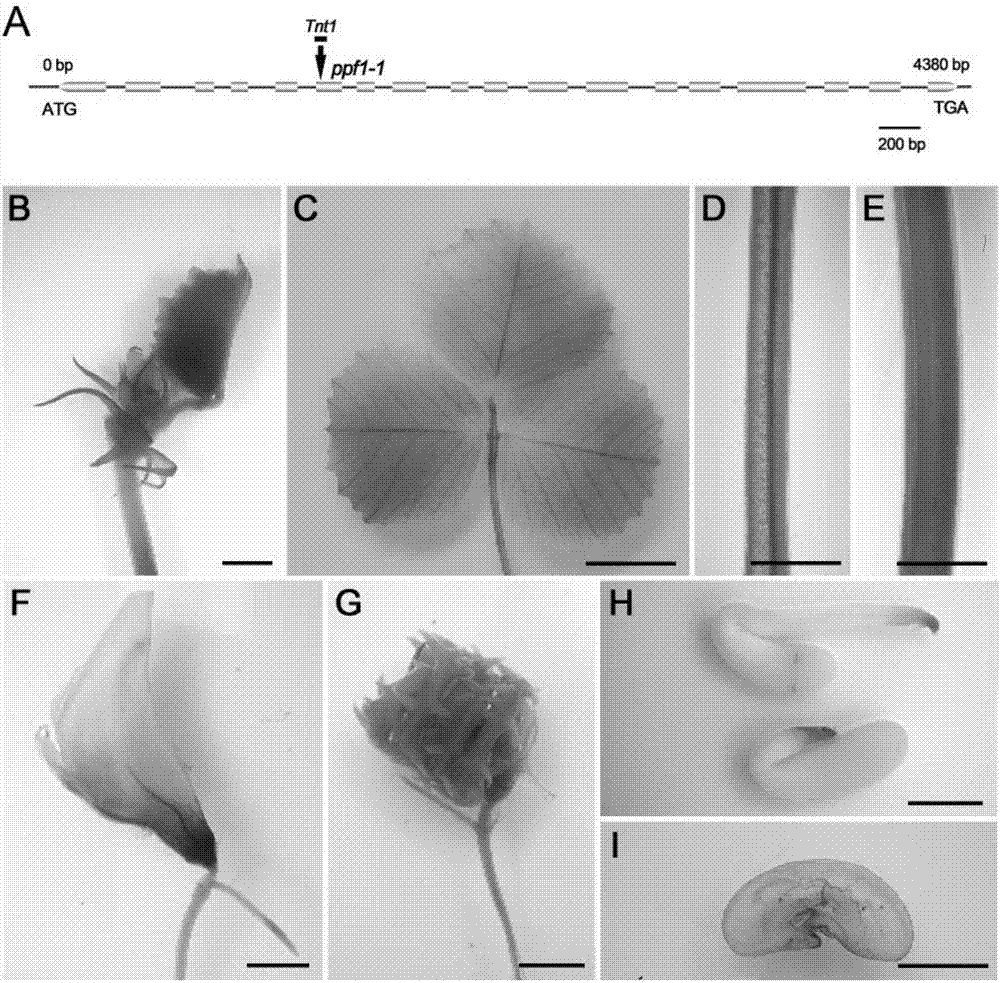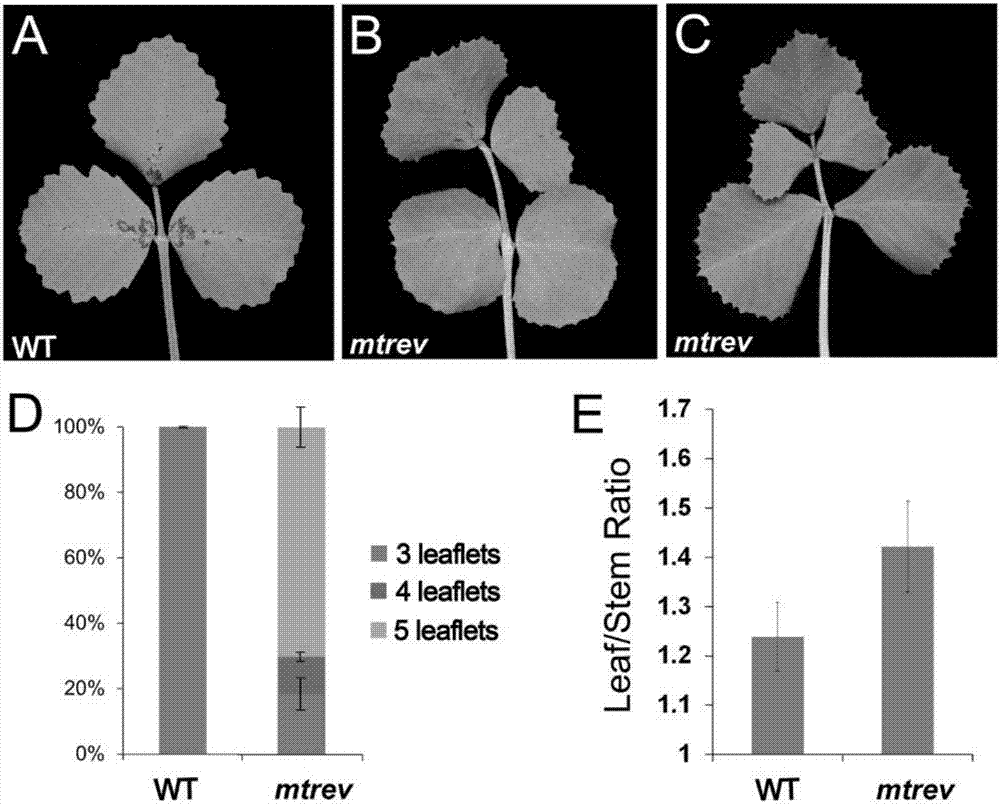Application of REVOLUTA gene to regulation and control on quantity of leaflets in leguminous plant and leaf-stem ratio
A technology of leguminous plants and small leaves, applied in the field of genetic engineering, can solve the problem of low frequency of multiple leaves
- Summary
- Abstract
- Description
- Claims
- Application Information
AI Technical Summary
Problems solved by technology
Method used
Image
Examples
Embodiment 1
[0018] Example 1 Cloning of Medicago truncatula gene MtREVOLUTA
[0019] 1. Cloning of MtREVOLUTA gene of Medicago truncatula
[0020] Obtain the sequence of Arabidopsis REVOLUTA through the bioinformatics website NCBI, and then use BLAST to perform sequence comparison search to obtain the genome sequence of MtREVOLUTA. Design the primers shown in SEQ ID No. 2 and SEQ ID No. 3 according to the sequence. The RNA of Medicago truncatula was extracted with TRIzol kit, and the full-length CDS sequence of MtREVOLUTA gene was amplified by RT-PCR method. Use Gateway technology to link the gene sequence into the pEARLEYGATE201 vector, and then perform sequence determination to verify the correctness of the cloned sequence.
[0021] 2. Sequence information and characteristics analysis of MtREVOLUTA gene of Medicago truncatula
[0022] The CDS of the coding region of MtREV1 gene is 2520bp, contains 18 exons and 17 introns, encodes 839 amino acids, and contains the conserved HD-ZIP, MEKHLA and ...
Embodiment 2
[0025] Example 2 Obtaining and identification of MtREVOLUTA mutant of Medicago truncatula
[0026] Using Thermal asymmetric interlaced-PCR (TAIL-PCR) technology, we screened a mutant library labeled with Tnt1 of Medicago truncatula. Among 22,000 mutant lines, the mutant lines with Tnt1 inserted into the MtREVOLUTA gene were screened out ( figure 2 A). Molecular biology identification results showed that the insertion of Tnt1 into the sixth exon of the MtREVOLUTA gene caused a significant decrease in the expression level of this gene ( figure 2 B).
Embodiment 3
[0027] Example 3 Statistics of leaflet number of MtREVOLUTA mutant of Medicago truncatula
[0028] The phenotype of the mutant was analyzed, and the results showed that the number of small leaves of the knockout MtREVOLUTA mutant increased significantly. The wild-type compound leaf contains three leaflets, while about 81.5% (n=300) of the compound leaf of the mutant contains 4 or 5 leaflets ( image 3 A-D). Further analysis showed that the leaf-to-stem ratio of the mutant was increased by about 11% compared with the wild type (n=10) ( image 3 E).
PUM
 Login to View More
Login to View More Abstract
Description
Claims
Application Information
 Login to View More
Login to View More - R&D
- Intellectual Property
- Life Sciences
- Materials
- Tech Scout
- Unparalleled Data Quality
- Higher Quality Content
- 60% Fewer Hallucinations
Browse by: Latest US Patents, China's latest patents, Technical Efficacy Thesaurus, Application Domain, Technology Topic, Popular Technical Reports.
© 2025 PatSnap. All rights reserved.Legal|Privacy policy|Modern Slavery Act Transparency Statement|Sitemap|About US| Contact US: help@patsnap.com



